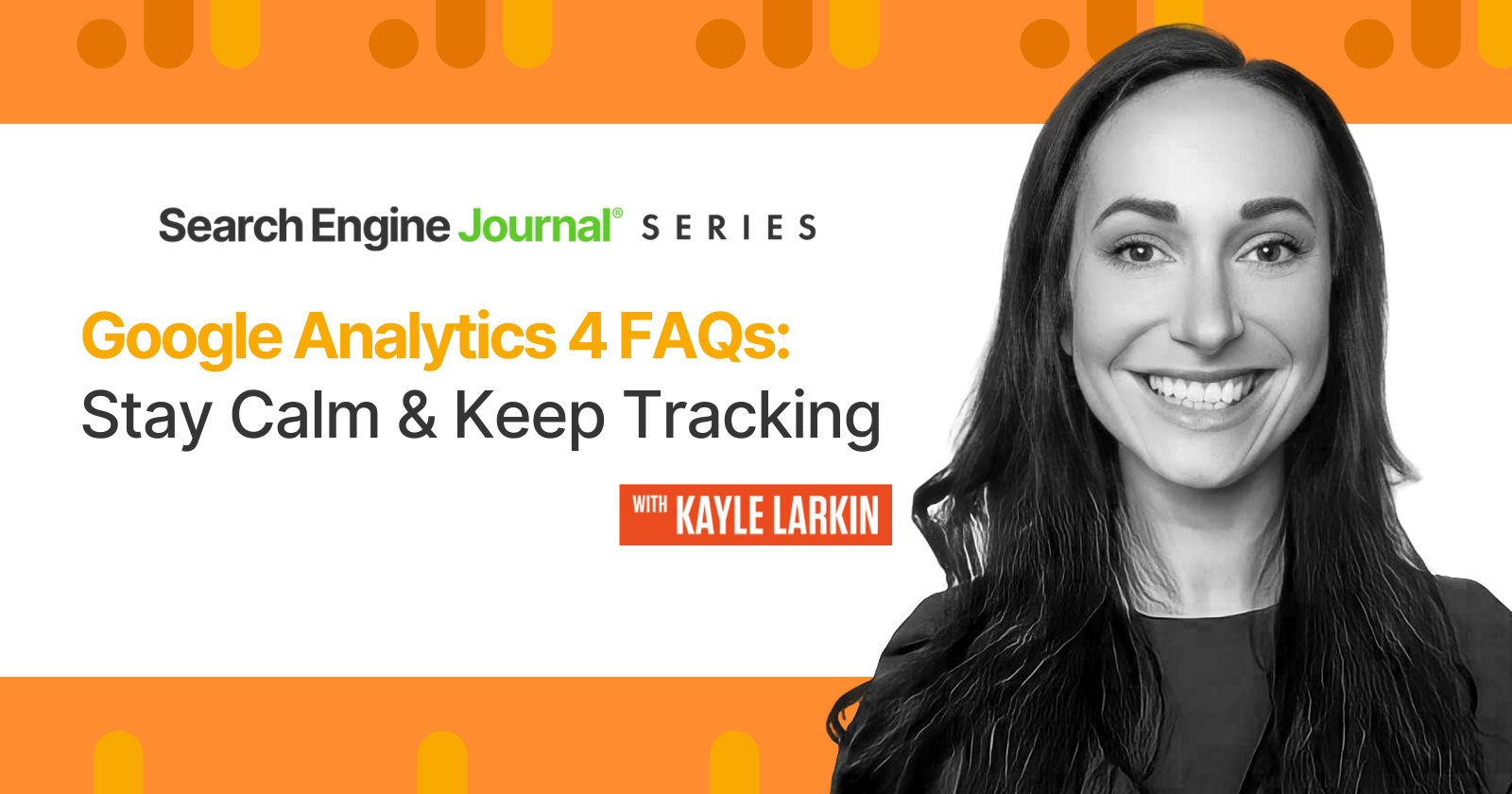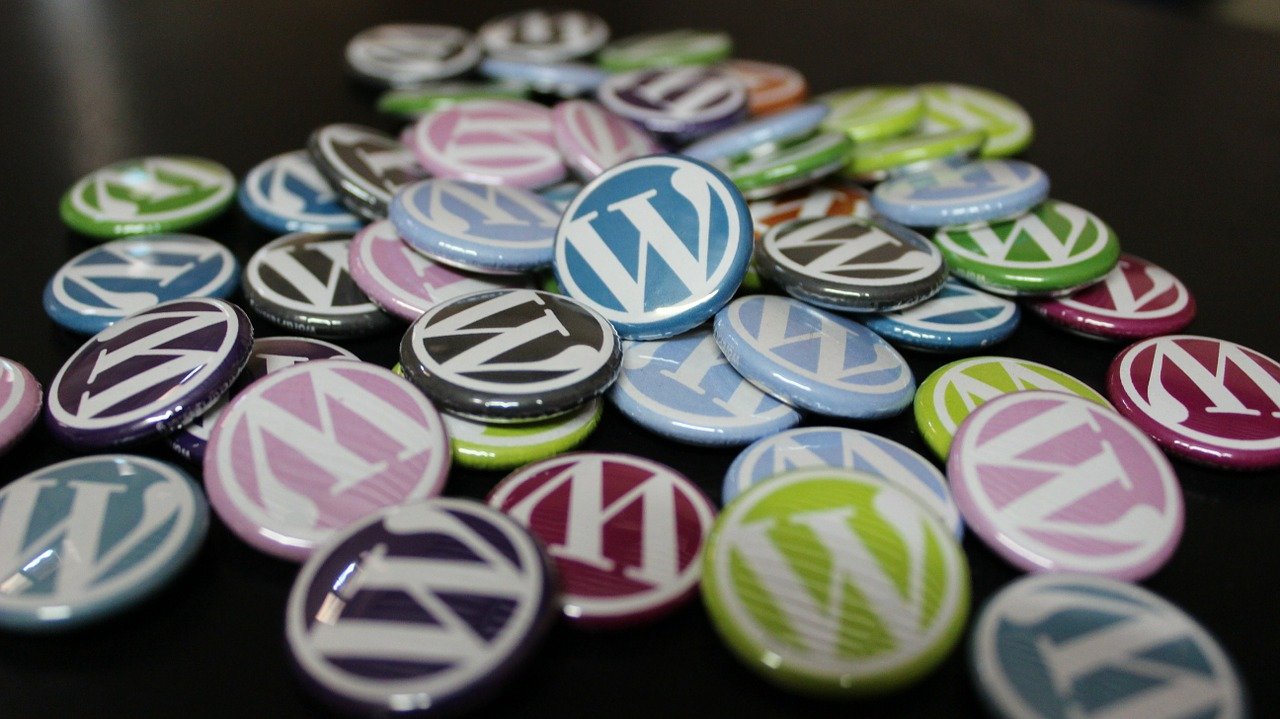Google Analytics 4 FAQs: Stay Calm & Keep Tracking via @sejournal, @KayleLarkin
Analytics experts answer GA4 FAQs: Why is this happening? What do these changes mean? What do I need to do right now? The post Google Analytics 4 FAQs: Stay Calm & Keep Tracking appeared first on Search Engine Journal.

On March 16th, 2022, Google Analytics shocked the marketing industry by announcing that Universal Analytics would stop processing hits in July 2023.
This didn’t go over so well.
Some marketers are unhappy with the user interface; others are frustrated that GA4 does not have key features.
Many are still in the denial phase – besides, isn’t it still in beta?
Let’s take a step back and answer the burning questions here:
Why is this happening? What do these changes mean? What do I need to do right now?Why Universal Analytics Is Updating To Google Analytics 4
Many marketers have built business processes around Universal Analytics and want to know why this change is happening.
So, I asked former Googler Krista Seiden, who helped build GA4 and is also the founder of KS Digital, “Why is this GA4 update happening?”
Seiden explained that GA4 has actually been in development for many years.
Originally, it came out as a public beta called App+Web, and in October 2020, it dropped the beta label and was rebranded as GA4.
“GA4 isn’t so much an update, but an entirely new way of doing analytics – set up to scale for the future, work in a cookieless world, and be a lot more privacy-conscious,” Seiden explained.
Google’s announcement blog was entitled,“Prepare for the future with Google Analytics 4.”
… for the future.
We keep hearing this; what does “for the future” mean?
When I read Google documentation and chatted with analytics experts, I noticed three main themes or ways that GA4 prepares your business for the future:
updated data model, works in a cookieless world, and privacy implications.Let’s unpack each of these.
Data Model
A data model tells Google Analytics what to do with the site visitor information it collects.
Universal Analytics is built on a session-based data model that is 15 years old.
This was before internet devices like smartphones were widely used.
UA measurement was built for independent sessions (group of user interactions within a given time frame) on a desktop device and user activities were tracked with cookies.
Fun fact, I learned from the head of innovation at Adswerve, Charles Farina, that you can actually still implement GA javascript code from 15 years ago.
Yes, I’m talking about the original tracking code (Urchin).
And it still works today.
In the past few years, this old measurement methodology has become obsolete.
As much as we love Google Analytics, there are many examples of how it just does not work with the way users interact with our websites today.
Farina shared an example with conversions.
In Universal Analytics, goals are session-based. You cannot measure goals by user.
If a user watches four videos in one session, it can only count as one conversion.
In GA4, conversions (or goals) are event-based.
Cookieless World
Google Analytics works by setting cookies on a user’s browser when visiting your website.
Cookies allow a website to “remember” information about a visitor.
That information can be as simple as “this user has visited before” or more detailed, like how a user interacted with the site previously.
Cookies are widely used on the web. And they can be helpful for things like remembering what items you put in a cart.
However, cookies also pose a privacy risk because they share data with third parties.
As the world becomes more aware of privacy issues, users increasingly want to opt out of sharing their data.
And because more people opt out of sharing their data, Google Analytics cannot report on all the people who visit a website.
There is a growing gap in the data collected.
Google Analytics had to adapt to remain useful to website owners.
And they did.
GA4 is designed to fill in the gaps using machine learning and other protocols to create reports.
This is called “blended data.”
In the blog post about this change, Google explains.
“Because the technology landscape continues to evolve, the new Analytics is designed to adapt to a future with or without cookies or identifiers.
It uses a flexible approach to measurement, and in the future, will include modeling to fill in the gaps where the data may be incomplete.
This means that you can rely on Google Analytics to help you measure your marketing results and meet customer needs now as you navigate the recovery and as you face uncertainty in the future.”
Data Privacy
Data privacy is a big topic that deserves its own article in length. To oversimplify it, people want more control over their data and its use.
Laws such as GDPR and the California Consumer Privacy Act are enforcing this desire.
Google Analytics says that GA4 is designed with privacy at its core – but what does that mean?
All UA privacy settings will carry over, and we are getting new features.
For example, Google Analytics 4 does not store IP addresses and GA4 relies on first-party cookies, which supposedly keep them compliant with privacy laws.
I encourage you to use this time to consider your data strategy and set the tone for your company’s data privacy policy, assess your digital footprint and consent management, and ensure compliance.
What Do These Changes Mean For My Business?
The second thing marketers want to know is, “How is GA4 different?”
Or really, “How will these changes affect my business?”
Don’t get too caught up in comparing Universal Analytics and GA4.
The numbers won’t match.
It’s a rabbit hole with no actionable or otherwise helpful outcome.
As Seiden pointed out, this is not just a platform upgrade.
It’s a completely new version of Google Analytics.
GA4 is a new data model and a new user interface.
Keep reading for a summary of key differences between UA and GA4 data and how they affect your business.
Changes in Data Modeling
The most important change is the way data is collected.
Universal Analytics uses a session-based data model (collection of user interactions within a given time frame) and collects data as various hit (user interaction) types within these sessions.
This is why watching four videos in one session only counts as one conversion in UA.
Google Analytics 4 is user-based and collects data in the form of events.
Each event has a unique name (event_name parameter) used to identify the event, with additional parameters to describe the event.
For more on the differences between the two data models, see UA versus GA4 data in the Google help docs.
Spam Detection
Have you ever seen a giant spike in traffic in Universal Analytics or a bunch of random traffic sources that you couldn’t explain?
Spammers could send fake data to people’s Google Analytics accounts by using the Measurement Protocol.
As you can imagine, this created a big problem with inaccurate data.
Google has fixed this problem by only allowing hits with a secret key to send data to a GA4 property. This key is visible in your GA4 data stream settings but is not available publicly.
Data Retention
Data retention refers to how long Google Analytics keeps disaggregated data. At the end of the retention period, the data is deleted automatically.
The default setting for data retention in Universal Analytics is 26 months. But you could choose a different time interval, from 14 months to “do not automatically expire.”
In GA4, you can choose to retain data for two months or 14 months.
At the end of the retention period, you keep the aggregated data in standard reports, but the disaggregated data used in Explore reports are no longer available.
What is aggregated versus unaggregated data?
Think of aggregated data as a summary used to look at website visitors as a whole.
And disaggregated data is dissected or broken down into smaller subsections, such as a specific audience or segment.
Shorter retention periods are not really a big deal.
You can still accomplish the same use cases while doing more to respect user data privacy.
You can still run (aggregated) standard reports to show how well you are doing compared to past performance.
And data from the most recent months is the most useful if you want to make predictions and take action.
User Interface: Reporting
GA4 reporting comes with a learning curve.
With Universal Analytics, there was an emphasis on pre-built reports. It was fairly easy and quick to navigate “done-for-you” reports.
Google Analytics 4 is oriented toward taking greater ownership of our data. With that comes the flexibility of custom reporting templates.
Because the data model has changed and the platform is more privacy-conscious, replicating some of the tasks you performed in Universal Analytics may not be possible.
As an agency or freelancer, you have an additional responsibility to communicate wins and opportunities to your accounts.
And they’re going to need time to learn GA4 or, more likely, rely on you to learn GA4.
To visualize the data in a more familiar way to your clients, I highly recommend Data Studio.
What Do I Need To Do Right Now?
There is no need to panic.
You have time to implement GA4 configuration, time to update business processes, and time to learn new reports.
With that said, GA4 needs to take priority on your roadmap.
Audit your existing analytics setup and create a GA4 configuration plan.
Setting up GA4 before July 2022 is mission-critical.
Start building historical data so that you can do a year-over-year analysis next year.
Once GA4 events are collected, get your team up to speed and update your processes.
A year from now, they will need to be comfortable using Google Analytics 4 to make marketing decisions.
Start planning team training sessions. SEJ rounded up the top educational guides and GA4 resources here.
Last but not least, make plans to extract historical data in Universal Analytics before July 2023. BigQuery doesn’t cost anything aside from the low storage fees.
Final Thoughts
You’re not just getting an upgrade when you switch to Google Analytics 4. You’re getting an entirely new way of analytics.
This solution is necessary to respect user data privacy and get actionable insights in a cookie-less world.
At the heart of this change is a new data model that makes GA4 different from what we have used in the past decade.
Right now, it’s important to configure GA4 and conversion events for year-over-year data when UA is sunset in July 2023.
After embracing the change, you might enjoy the flexibility and user insights with GA4.
Happy tracking!
More resources:
Getting Started With GA4: These 4 Tips Will Get You Up & Running Learn GA4: 17 Top Guides & Educational Resources SEO Strategy: A Full Year Blueprint (+Template)Featured Image: Paulo Bobita/Search Engine Journal

 Kass
Kass 































